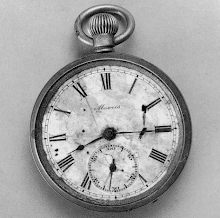Learning of a possible link between an empty World War I shell, found in 2020 during construction of a trail through Fort Totten Park, and the decades-long Spring Valley cleanup of chemical weapons was concerning to D.C. Del. Eleanor Holmes Norton. Now, after calling for a meeting with the heads of the National Park Service and the Army Corps of Engineers, Norton told WTOP she has been assured that no other evidence of World War I weapons or safety concerns have been discovered. “I could not believe that we were finding unexploded ordnance,” said Norton. “Not after what we went through, in 1993” ... The 1993 discovery [of a munitions burial pit on 52nd Court] prompted the Spring Valley cleanup in Northwest D.C. at the former American University Experiment Station (AUES) used by the U.S. government for research and testing of chemical agents, equipment and munitions — once dubbed the “mother of all toxic dumps” ...
Mar 12, 2022
Norton Falls for NPS Whitewash of Fort Totten WW I-Era Munition
As WTOP reported, the empty 75 mm shell found at Ft. Totten had been modified for use as a chemical weapon, and was similar to the weapons discovered in Spring Valley, according to Dan Noble of the Corps of Engineers, project manager of the Spring Valley cleanup. Norton said she was told the ordnance discovered at Ft. Totten had likely been there since 1992, when contaminated soil from Spring Valley was trucked to a landscaping project at the Ft. Totten Metro station ... In 1992, the heavy equipment operator spreading Glenbrook Road soil at the Ft. Totten Metro site felt sickened from the fumes of the soil, and the U.S. Park Service ordered it be removed. “We had a very in-depth meeting,” with park service and Army Corps officials, said Norton. “There has been a thorough search of the entire area [sic], and no additional ordnance or issues had been turned up — I hope I can rely on that, this time.” “They have assured me that they have done a very thorough search of the entire area,” Norton added ... “When they say the entire area, that’s what I’m going to hold them to,” Norton said.
In the April 2019 SI Report, the NPS said that “approximately 60 yards of uncompacted fill material,” containing Glenbrook Road soil contaminated with AUES munitions debris and laboratory waste, was dumped in the western section of Ft. Totten "as part of landscape restoration” in 1992 (Section 2.2, pg.5). Due to fumes that sickened the bulldozer operator who was spreading the fill material, the NPS subsequently ordered the toxic soil to be removed. As you know, the July 2020 75mm shell — recovered in a narrow wooded strip of land located east of the metro station between Gallatin and Galloway Streets, NE — had been adapted with a hexagonal plug to accommodate poison gas. Logic dictates that the 2020 discovery of this AUES munition, “2100 feet" east (August 2021 PA/SI Report, Introduction, pg. 2) of the 1992 dumping, originated from the Glenbrook Road construction sites and was, in fact, part of the multiple tons of relocated fill material. Even though the NPS — and now apparently Congresswoman Norton — are “reassured” that the April 2021 survey was “thorough,” I’m frankly horrified by this blatant obfuscation. As if the original transfer of toxic waste from one of the wealthier residential areas of our nation’s capital to a working class, Northeast neighborhood wasn’t bad enough, the NPS’ current boneheaded cover-up just compounds the error.
Subscribe to:
Posts (Atom)
.png)


